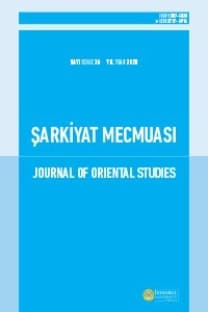Modern Arap Şiirinde Ayasofya
Kadim Grekçe’de Kutsal Bilgelik anlamı taşıyan, yakın geçmişte müze olarak kullanılmış ve günümüzde Ayasofya-i Kebir Cami-i Şerifi resmi ismi ile ibadethane statüsü kazandırılmış olan Ayasofya, Hristiyanlık ve İslam dini kültürlerince önemli bir konumdadır. 532- 537 yılları arasında I. Justinianus tarafından bazilika planlı inşa ettirilen bu patrik katedrali, 1453 yılında Fatih Sultan Mehmet Han’ın İstanbul’u fethedip, fethin 3. günü ordusuyla birlikte kıldığı ilk Cuma namazı sonrasında cami statüsü kazanmasına kadarki sürede Ortodoksların ve Papalığın merkezi konumundaydı. II. Mehmet, Ayasofya’da kılınan ilk namazla birlikte camiyi vakfetmiş ve Fatih Külliyesi ile Ayasofya-i Kebir Vakfı’nı kurmuştur. Böylece Ayasofya; Osmanlı devletinin gücünü, Müslümanların batıya karşı zaferini işaret etmesi bakımından simgesel bir anlam ve değer taşımasının yanı sıra, Müslümanların gönüllerinde de kutsal bir sembol haline gelmiştir. Bunun doğal bir sonucu olarak Ayasofya’nın yeniden batılılar tarafından geri kazanılması varılacak bir hedef haline dönüşmüştür. Her iki dinin de kutsalı olmuş olan Ayasofya, konumu ve kültürel bir miras oluşu bakımından da hem Hristiyanlar hem de Müslümanlar için aynı derecede önem taşımaktadır. İstanbul’un fethinden günümüze kadar, önce Osmanlı Devleti ve akabinde Türkiye Cumhuriyeti Devleti, Ayasofya’yı korumak için büyük bir özveri ve çaba göstermişlerdir. İstanbul’un fethiyle camiye, daha sonra 1934 yılında yayımlanan Bakanlar Kurulu Kararnamesi ile müzeye dönüştürülen Ayasofya, 2729 sayılı Cumhurbaşkanlığı Kararnamesi ile yeniden camiye dönüştürülerek ibadete açılmıştır. Bu çalışmada modern Arap şiirinde Ayasofya imgesi ele alınmış olup, Ayasofya’nın mimari özellikleri, Fatih Sultan Mehmet’in İstanbul’u fethi ve Ayasofya’yı camiye dönüştürmesi, Birinci Dünya Savaşı’nda Ayasofya için yazılan mersiyeler, Ayasofya’nın değişen statüsü irdelenmiştir.
The Hagia Sophia In Modern Arabic Poetry
Hagia Sophia means sacred wisdom in Ancient Greek and had been used as a museum in the recent past. Currently it has been given the status of a place of worship with the official name of Ayasofya-i Kebir Cami-i Şerifi [Hagia Sophia Grand Mosque], and it has an important place in the religious cultures of Christianity and Islam. This patriarchal cathedral was built by Justinian I between 532-537 AD as a basilica and had served as the center of the Eastern Orthodox Church and its Ecumenical Patriarchy until Fatih Sultan Mehmet Khan conquered Istanbul in 1453, when it gained the status of a mosque after the first Friday prayer he performed with his army on the third day of the conquest. Mehmet II dedicated the mosque with this first congregational prayer in Hagia Sophia and established the Fatih Complex and the Hagia Sofia Waqf. Thus, Hagia Sophia not only had a symbolic meaning and value in terms of indicating the power of the Ottoman State and the victory of the Muslims against the West but also became a sacred symbol in the hearts of Muslims. As a natural consequence of this, the reconquering of Hagia Sophia by Westerners became a goal to be reached. Being sacred to both Orthodox Christianity and Islam, Hagia Sophia has been equally important to both Christians and Muslims in terms of its location and as a cultural heritage site. From the conquest of Istanbul to the present day, first the Ottoman Empire and then the Republic of Türkiye made great sacrifices and efforts to protect Hagia Sophia. Hagia Sophia, which had been converted from a basilica into a mosque with the conquest of Istanbul and then into a museum with the Decree of the Council of Ministers published in 1934, was reconverted in 2020 into a mosque with Presidential Decree No. 2729 and left open for worship. This study discusses the image of Hagia Sophia in modern Arabic poetry and examines the architectural features of Hagia Sophia, the conquest of Istanbul by Fatih Sultan Mehmet and its conversion into a mosque, the elegies written for Hagia Sophia during World War I, and Hagia Sophia’s status changes.
___
- “Ayasofya”. Erişim 1 Ağustos 2022. https://www.ayasofyacamii.gov.tr/tr/ayasofya-tarihi. el-Aşmâvî, A. Dîvân (Cevletu fî Arâbât el-Huzn). Riyad: Mektebetu el-Abîkân, 1426.
- es-Sûmâlî, A. b. E. Kasîdetu Ayasofya, Erişim 13 Ağustos 2021. https://www.youtube.com/watch?v=B5aCEFJ2bNQ. et-Tenânî, M. b. A. Î. şiir, şairinden elektronik posta yoluyla 8/10/2021 tarihinde istenmiştir.
- et-Trablûsî, E. Mecelletu er-Risâlet el-Mısrıyye. 109 (Kahire: y.y.,1935): 1270. Eyice, S. “Ayasofya”. DİA. IV:206-210. Istanbul: TDV, 2020.
- Hanbel, A. Müsned. IV/335. Kahire:1313.
- Huseyn, M. M. el-İtticâhâtu’l-Vataniyye fî’ş-Şi‘ri’l-Mısrî. Kahire: Mektebetu el-Âdâb, 1980.
- Ibrâhîm, H. Dîvânu Hâfız İbrâhîm. Düzenleyenler Ahmed Emîn, Ahmed ez-Zeyn, Ibrâhîm el-Ebyârî. Kahire: el-Hey’etu el-Mısrıyyetu el-Âmmetu li’l-Kitâb, 2008.
- Şevkî, A. eş-Şevkiyyât. Haz. Muhammed Huseyn Heykel. Kahire: el-Mektebetu’t-Ticâriyye el-Kubrâ, 1970.
- Türkiye Cumhuriyeti Cumhurbaşkanlığı Iletişim Başkanlığı, Ayasofya Camii Fatih Sultan Mehmet Han’ın Emaneti Insanlığın Ortak Hazinesi (Istanbul: Cumhurbaşkanlığı Iletişim Başkanlığı Yayınları, 2020), 7.
- Yazıcı, H. “Hâfız Ibrâhîm”. DİA. XV: 91-92. Istanbul: TDV, 1997.
